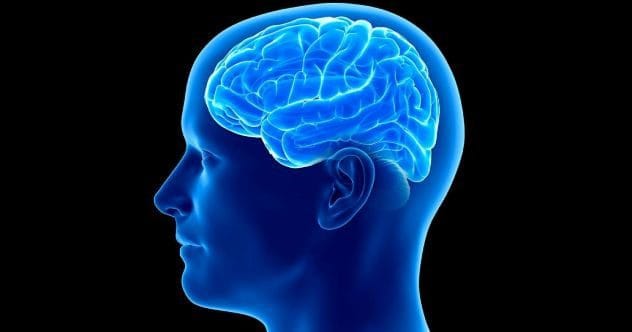The human brain – it’s the command center of our entire being, a marvel of complexity that scientists are still working to fully understand. It’s responsible for our thoughts, dreams, actions, and every single innovation mankind has ever achieved. But beyond its everyday wonders, there are some truly strange and fascinating things about this three-pound organ. Get ready to have your mind blown as we explore 10 unusual and little-known facts about the human brain!
10. Your Brain Can Get Pretty Hot!
Just like your computer heats up when it’s working hard, your brain does too! Research shows that a healthy, active brain can reach temperatures up to 104°F (40°C). That’s quite a bit warmer than the rest of your body, which usually sits around 98.6°F (37°C). Interestingly, studies using 4-D brain temperature maps have found that female brains might run slightly warmer than male brains, possibly due to the menstrual cycle. Brains also tend to be cooler at night and warmer during the day. This fascinating heat signature could even help doctors diagnose brain damage or disorders in the future.
9. Tiny Pollution Particles Can Invade Your Brain
It’s a scary thought, but tiny toxic particles from air pollution don’t just affect your lungs. Researchers have found that these ultra-fine particles can travel from your lungs into your bloodstream and then sneak past the blood-brain barrier. This barrier is like a security checkpoint, usually only letting essential things like oxygen and glucose into the brain. Once these harmful particles, which can include things like iron and titanium dioxide, get into the brain tissue, they can stay there longer than in any other organ. This can lead to brain inflammation and serious problems with thinking and memory.
8. Some People Can’t Recognize Faces – Even Their Own
Imagine looking at a friend or family member and not knowing who they are. This is a reality for people with a condition called prosopagnosia, or “face blindness.” They can see a face clearly, but their brain can’t process it to identify the person. Even famous actor Brad Pitt has spoken about living with this disorder, sharing how it makes him feel isolated because people misunderstand his inability to recognize them. It’s more common than you might think; about one in 50 people are affected. This condition is often present from birth and might be linked to how a specific part of the brain, the fusiform gyrus, works.
7. Your Brain Might Be “Rewireable” with Help
Could we actually rewire our brains? The answer seems to be a hopeful “maybe.” Substances like psilocybin, found in certain mushrooms, are being studied as a potential breakthrough treatment for severe depression that doesn’t respond to traditional methods. When psilocybin is processed by the body, it has psychoactive effects that might help treat various issues, from cluster headaches and anxiety to substance abuse. It’s thought that psilocybin can help break the grip of negative, self-critical thoughts, allowing for more flexible thinking. Researchers believe it might even help neurons grow new connections, building new circuits in the brain. However, experts caution that it doesn’t work for everyone.
6. The Hustle of Modern Life Can Tire Out Your Brain
The constant stress and endless demands of our modern world can take a toll on the brain’s prefrontal cortex, leading to something called “frontal fatigue.” This can make us more prone to mental health issues. Signs of frontal fatigue include difficulty paying attention, forgetting small things or words, struggling with multitasking, and being more irritable or emotional. To combat this, doctors suggest engaging in hands-on activities like crafts, cooking, or gardening. It’s also helpful to indulge your senses by exploring new foods, art, music, and nature. Connecting with others and managing thoughts through meditation or reading, while disconnecting from tech sometimes, can also help soothe a tired brain.
5. Your Brain is a Master Data Compressor
To work efficiently, your brain is constantly filtering information. It ignores what’s not relevant and focuses only on what’s important for the task at hand. Neuroscientists say the brain uses a kind of “tunnel vision” or data compression to get the best performance while using the least amount of energy. Think of it like zipping a large file on your computer to make it smaller and easier to handle. This amazing ability helps us make decisions and understand the world around us without getting overwhelmed. Understanding how the brain does this could even help improve artificial intelligence.
4. Einstein’s Brain Was Unique, But Not How You Might Think
Albert Einstein’s brain has fascinated scientists for decades. Postmortem studies showed some typical signs of aging, but also several unusual features. For example, parts of his brain had an unusually high number of non-neuron cells called glia. More strikingly, his parietal lobe, an area linked to math skills and spatial reasoning, was missing a common furrow. Scientists believe this absence might have actually enhanced connections in that region. His brain also had a very complex pattern of folds in certain areas, increasing its surface area, which could have contributed to his incredible thinking abilities. Surprisingly, though, Einstein’s brain was actually smaller than the average brain!
3. Some Animals Share Special Brain Cells with Us
There’s a special type of brain cell called the von Economo neuron, and it’s quite distinctive – large and easy to spot. Interestingly, these neurons are found not only in human brains but also in the brains of some other, mostly larger, animals like great apes, whales, dolphins, cows, and elephants. Scientists think these neurons evolved independently in animals with big brains or complex social lives. These cells are missing in people with certain brain diseases but are found in abundance in “super-agers” – older folks who don’t experience typical age-related memory loss. Since common lab animals like rats and mice don’t have them, there’s still much to learn about these unique neurons.
2. Your Brain Absolutely Loves a Good Surprise!
Ever wonder why unexpected good news feels extra special? MRI scans show that our brains are actually hard-wired to enjoy surprises. The brain’s “pleasure center,” known as the nucleus accumbens, lights up strongly when something unexpected and pleasant happens. Think about it: a birthday gift is nice, but a surprise gift on a random day often feels even better. That’s because positive surprises trigger a rush of dopamine, a feel-good chemical, making that pleasure center light up like a Christmas tree. So, a little spontaneity can go a long way in delighting your brain!
1. Horror Movies Trigger Unique Brain Activity
It’s probably no shocker that watching horror movies affects your brain. Neuroimaging shows that our brains react strongly, especially when a film slowly builds suspense rather than just relying on jump scares. When anxiety gradually increases, areas of the brain involved in visual and auditory processing become more active, as if scanning for danger. Then, after a scary moment, parts of the brain linked to emotional processing, threat evaluation, and decision-making kick into high gear. Horror movies often feature superhuman or supernatural threats that can’t be easily fought or reasoned with, upping the ante. Interestingly, psychological horror based on real events or implied threats often scares us more than visible monsters. People also often watch scary movies for the thrill and social experience.
The human brain is truly an endlessly fascinating and complex organ. These ten unusual facts just scratch the surface of its incredible capabilities and quirks. From heating up like a computer to loving surprises and even having unique features like Einstein’s, our brains are full of mysteries waiting to be uncovered. Understanding these little-known aspects reminds us just how marvelous the center of our nervous system truly is.
Which of these brain facts surprised you the most? Do you know any other unusual brain facts? Share your thoughts in the comments below!










